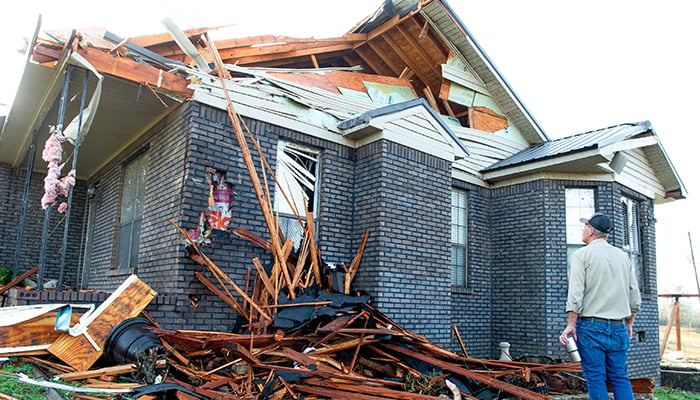
Just a few minutes ago, a tornado touched down in Franklin, sparking immediate concerns as the storm intensified and began to cause significant damage in the area. The National Oceanic and Atmospheric Administration (NOAA), along with meteorologists across the country, have issued urgent warnings and are providing live updates regarding the storm’s path, intensity, and the immediate threat to residents in Franklin and surrounding regions.
### **The Tornado’s Path and Impact**
According to the latest reports from NOAA, the tornado made landfall in Franklin, a community located in [specific state], around [time of touchdown]. The tornado, which was part of a larger storm system sweeping through the region, has been classified as a **strong EF-2** tornado, with estimated winds ranging between 111 to 135 mph. The storm formed rapidly, catching many residents off guard as it tore through several neighborhoods. The damage has been extensive, with power lines down, trees uprooted, and homes and businesses suffering structural damage.
Meteorologists are closely tracking the storm’s progress, and their data confirms that the tornado originated from a supercell thunderstorm moving through the area. As the supercell intensified, the rotation became strong enough to produce a tornado. NOAA’s meteorological models predicted the tornado’s formation, but the speed at which it developed left little time for preparation for those in its immediate path.
### **NOAA’s Warning and Public Response**
In response to the touchdown, NOAA issued a **Tornado Warning** for Franklin and nearby counties, advising residents to seek shelter immediately. The agency has been providing continuous updates, including the location, speed, and projected path of the tornado. As of the latest data, the tornado is moving northeast at a rate of approximately 30 miles per hour, with its trajectory taking it towards [nearby town/city].
NOAA’s real-time storm tracking capabilities, combined with the efforts of local meteorologists, are critical in ensuring the safety of those in the affected areas. Franklin residents were urged to take cover in their basements or interior rooms away from windows. Many people have already sought refuge in storm shelters, and local emergency services have been dispatched to assist in the aftermath.
### **Meteorological Response and Preparedness**
Meteorologists, both from NOAA and local weather stations, are using advanced radar systems to monitor the storm’s development closely. The data being collected in real time is crucial for understanding how tornadoes form and behave, providing essential information for future weather prediction models. Live video footage from storm chasers on the ground is also helping to better illustrate the severity of the tornado and give authorities more situational awareness.
In Franklin, local schools and businesses have been evacuated as a precautionary measure. Emergency response teams are currently assessing the damage and coordinating efforts to assist those affected. Search and rescue operations are underway, and officials are urging people to stay off the roads to allow emergency vehicles to pass through more easily.
### **What Residents Should Do Next**
As the tornado moves through the region, NOAA continues to monitor the situation, updating the public on any further developments. Franklin residents are being advised to remain sheltered until the danger has passed. This may take some time, as tornadoes can remain on the ground for extended periods, particularly in more severe weather systems.
For those outside of the immediate danger zone, it’s crucial to stay informed by monitoring local weather updates and NOAA’s alerts. Franklin residents are being urged to check on neighbors, particularly the elderly or those with mobility issues, who may require additional assistance.
### **Looking Ahead**
This is an ongoing situation, and NOAA has warned that additional tornadoes could potentially form as the storm system continues to move through the region. The risk of further tornado activity remains high for the next few hours, with other areas to the northeast under close scrutiny. As Franklin and its surrounding areas recover from this unexpected and intense tornado, the work of emergency responders and the meteorological community will be essential in providing relief and gathering data for future storm preparedness.
Stay tuned for continued updates from NOAA, and stay safe by following all weather alerts and advisories.

Be the first to comment